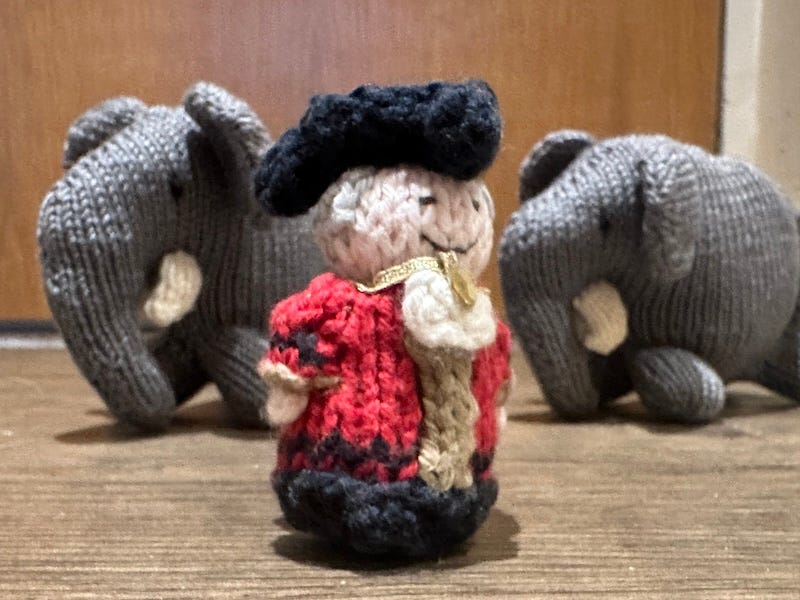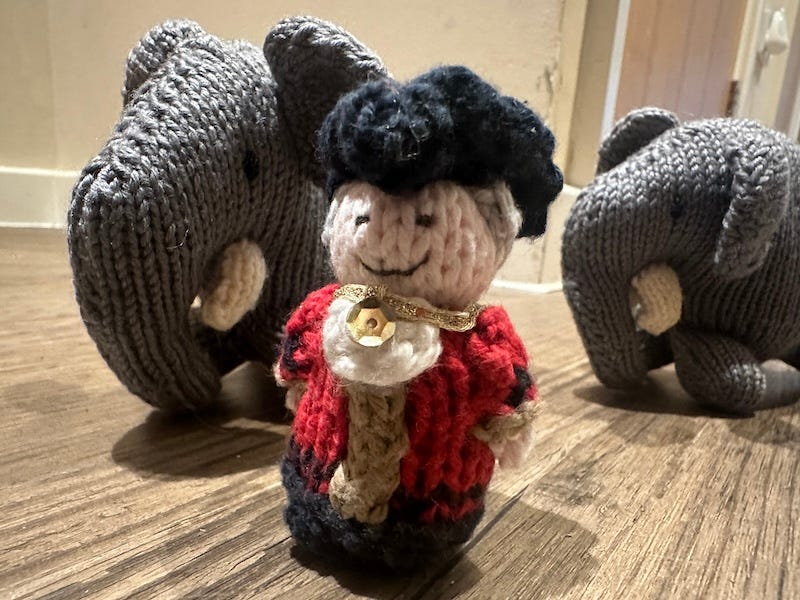Lord Mayor's Show: The Blooper Reel
From elephant stampedes to an invisible, fog-shrouded parade.
Welcome to your Friday newsletter for paying subscribers, with a generous teaser for everyone else. Email subscribers are receiving this on the eve of the Lord Mayor’s Show, London’s annual parade to welcome in a new Lord Mayor. Hence today’s theme.
Before the main course, I’d just like to thank everyone who came along on our visit to the Thames River Police Museum on Thursday. It was so popular that I will arrange another visit for next year. The museum’s manager Rob Jeffries was an absolute star, full of tales of derring-do and derring-don’t on the River Thames. I’ll give the place a bit of a write-up in an upcoming newsletter, and also talk up some plans for next year’s events for paying subscribers. Watch this space.
History Radar
Upcoming events of interest to London history fans.
🎺 LORD MAYOR’S SHOW: The subject of today’s newsletter takes place on Saturday 9 November from 11am. See the new Lord Mayor in his golden coach, along with marchers from many of the livery companies, military bands and many other organisations, often in eccentric floats. You can watch for free anywhere along the route, which wends through the centre of the City towards Westminster. The quieter return procession runs along Embankment between 1.15pm and 2.30pm.
🐒 LONDON ZOO: Oliver Flory of The Georgian Group gives an online lecture on 12 November, which will explore the early topography and architectural designs of London Zoo within Regent’s Park. Hear about the influence of Decimus Burton, whose designs shaped the zoo's character, and the evolution of the gardens up to 1837.
🎅 DICKENSIAN CHRISTMAS TOUR: The festive season gets underway on 13 November at the Charles Dickens Museum in Bloomsbury, with a guided tour led by an actor playing Dickens's close friend John Forster. Wander through the historic home of the writer, where you'll hear stories of Christmases past. And discover Dickens's deep connection to the festive season, highlighted by his classic tales like A Christmas Carol.
🌗 LONDON AT NIGHT: London Transport Museum holds a special after-hours Late event, themed around London’s nightlife in the 1920s. “Delve into the history of Covent Garden after dark with a tour exploring London’s history of theatres, gambling houses, and the London Transport Museum building’s past as a night-time flower market.” Oddly, given the theme, it’s alcohol-free.
Lord Mayor’s Show: The Blooper Reel
The Lord Mayor’s Show is one of London’s most venerable traditions. Its origins lie in medieval times. It marks the occasion, each November, when a new Lord Mayor is sworn into office. With thousands of participants, including hundreds of horses, ambitious floats and three miles of route, things will inevitably go wrong from time to time. In today’s newsletter, I’ve rounded up some of the biggest bloopers from its history. But first… I always enjoy reading a bad review.
Naysayers and grumpians
“Sir — one wonders how long metropolitan ratepayers will continue to endure the incalculable inconvenience and loss annually caused by this tomfoolery. What possible justification exists for its upkeep? From a spectacular point of view it is the most dismal of farces; economically it is rank insanity… It is doubtful if any single class of the community benefits by the show if we exclude the predatory collector of watches and trinkets.”
So opined an anonymous letter-writer to the Morning Leader in November 1909. The Lord Mayor’s Show was his (pronoun assumed) target. While much-loved today, the famous parade has drawn much criticism over the centuries. Another letter writer, this time in the Western Daily Press in November 1946, called for an end to the Show, which had “an element of childishness about it”. The most famous naysayer of all is diarist Samuel Pepys, who described the pageant in 1660 as “poor and absurd”.
A common criticism was the harm done to traffic flow, and to businesses along the route. Many had to close during the parade. “Why not suggest that the Lord Mayor’s Show should in future be concentrated at Olympia,” was one radical idea from the Mirror in 1927. Olympia was, and is, one of London’s largest exhibition centres, out in Kensington. “Those who wanted to see it could then go and see it, while it would not make the City man swear.” Happily, the Show did not decant to west London. From 1959, it was moved to the second Saturday in November, rather than the fixed date of 9 November, meaning it would never again clash with weekday traffic and commerce. Some people will always moan, but today the Show is widely considered a cherished part of the London calendar.
Elephant stampede
Did you hear about the time a lion caused an elephant stampede at the Lord Mayor’s Show? It sounds like an urban myth, but this bizarre incident really did take place. The culprit was a crimson model lion called Reggie, the mascot of King’s College London. In 1930, a group of students smuggled him out of the campus and on to the Embankment where the Mayor’s procession was in full swing. That year’s Show happened to include a group of four elephants. The parading trunksters took fright at the facsimile predator, and charged towards the crowd in panic. Fortunately, the bests were were calmed before much harm could be caused, though some minor injuries were sustained. Reggie, however, took a pummelling. One of the elephants stepped upon the rubicund cat. He survived the ordeal, and the repaired lion can still be seen today inside the Macadam Building off Strand.






